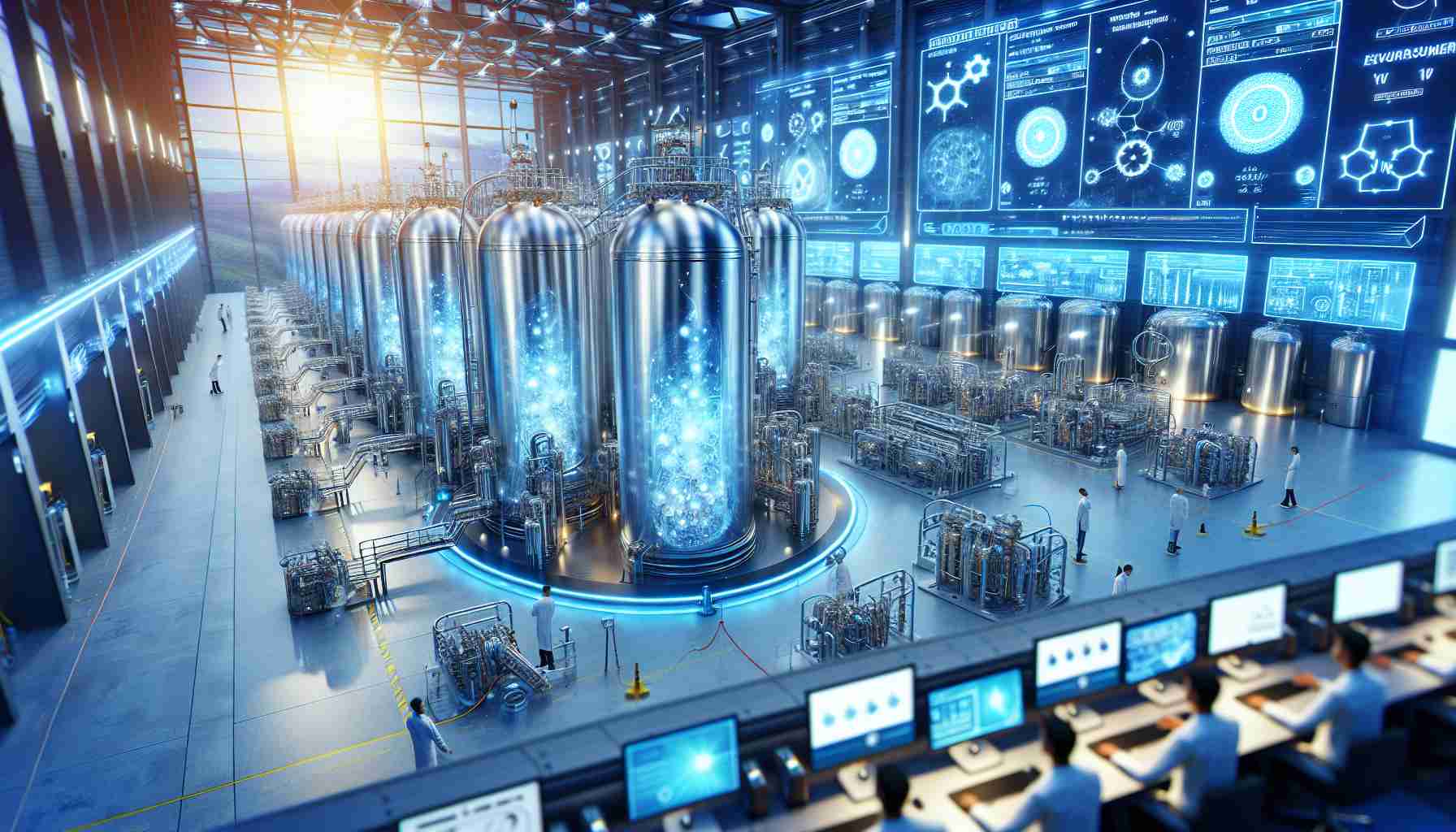Revolutionizing Hydrogen Shipping
HD Korea Shipbuilding & Offshore Engineering (HD KSOE) has achieved a significant milestone by securing Approval in Principle (AIP) from ABS for an innovative tank design tailored for the transport and storage of hydrogen on a large scale. This cutting-edge vacuum insulation system is specifically engineered to significantly accelerate the process of creating a vacuum within expansive tanks, a critical requirement for safe hydrogen transportation.
The advanced technology efficiently maintains a vacuum at temperatures as low as –253℃, which HD KSOE claims ensures secure and loss-free transportation of substantial volumes of liquid hydrogen. After thorough evaluations, ABS confirmed that the design meets both class and regulatory standards.
In light of increasing hydrogen demand as a cornerstone of decarbonization efforts, HD KSOE is committed to pioneering advanced energy shipping technologies. The company is collaborating with industry leaders, including Woodside Energy and Mitsui O.S.K. Lines (MOL), on the development of an 80,000 cubic meter liquid hydrogen carrier.
Experts from these organizations praised the achievement, underscoring the importance of this validation test in addressing the complexities of liquefied hydrogen transport and vessel design. With this accomplishment, HD KSOE solidifies its role as a trailblazer in the energy transition, setting a strong foundation for the future of sustainable shipping solutions.
The Broader Impact of Hydrogen Shipping Innovation
The recent advancements in hydrogen shipping technology represent not only a pivotal development in maritime engineering but also a catalyst for transformational change across multiple sectors. As countries commit to aggressive decarbonization targets, the efficient transport of hydrogen could redefine energy logistics, reducing dependence on fossil fuels and supporting the global transition to renewable energy resources.
Culturally, the shift towards hydrogen as a viable energy source signifies a profound change in societal perceptions regarding clean energy. Increased public awareness of climate change has fueled demand for sustainable solutions, influencing consumer behavior and corporate strategies alike. As hydrogen becomes more mainstream, we may witness a shift in cultural narratives that elevate renewable energies, altering how communities engage with environmental issues.
From an economic standpoint, the demand for innovative hydrogen shipping solutions could catalyze a new market segment, stimulating job creation in engineering, manufacturing, and logistics sectors. The potential for export-oriented industries to flourish, particularly in nations with abundant renewable energy resources, could create significant economic opportunities and boost energy security on a global scale.
Moreover, the environmental implications of efficient hydrogen transport are profound. Liquid hydrogen offers a low-carbon alternative to traditional fuels, potentially drastically reducing greenhouse gas emissions. However, the long-term consequences will depend on the energy sources used for hydrogen production. As governments prioritize investments in green hydrogen technology, we anticipate a growth in renewable energy infrastructure, essential for maintaining ecological balance.
In conclusion, the ongoing innovations at HD KSOE not only enhance maritime logistics but also illustrate a broader commitment to a sustainable future, setting a precedent for future developments in hydrogen transport and consumption.
Hydrogen Shipping Breakthrough: The Future of Clean Energy Transportation
Revolutionizing Hydrogen Shipping
HD Korea Shipbuilding & Offshore Engineering (HD KSOE) has made notable advancements in hydrogen transport by securing Approval in Principle (AIP) from ABS for an innovative tank design meant for large-scale hydrogen shipping. This new tank utilizes a sophisticated vacuum insulation system, designed to enhance the process of achieving a vacuum within large storage tanks, which is crucial for the safe transportation of hydrogen.
Features of the Innovative Tank Design
The new tank design boasts several critical features:
– Temperature Resistance: Capable of maintaining vacuum at temperatures as low as –253℃, ensuring optimal conditions for liquid hydrogen storage.
– Efficiency: The vacuum insulation system markedly accelerates the vacuum creation process, which is vital for minimizing hydrogen loss during transportation.
– Regulatory Compliance: Successfully passed evaluations confirming adherence to both class and regulatory standards set by ABS.
Use Cases in Hydrogen Transportation
Given the rising demand for hydrogen in the global shift towards decarbonization, this technology presents multiple use cases:
1. Bulk Transportation: Efficiently transport large volumes of liquid hydrogen from production sites to consumption areas.
2. Energy Transition Solutions: Support industries looking to transition to cleaner energy sources by providing reliable hydrogen infrastructure.
3. Collaboration Projects: Work with various partners, such as Woodside Energy and Mitsui O.S.K. Lines (MOL), to develop specific applications tailored for liquid hydrogen carriers.
Pros and Cons of the New Technology
# Pros:
– Enhanced Safety: Higher safety standards due to improved vacuum technology helps in preventing leaks and accidents during transportation.
– Cost Efficiency: Potential to reduce costs associated with hydrogen loss, making the supply chain more economical.
– Environmental Impact: Facilitates the growth of the hydrogen economy, contributing positively to decarbonization efforts globally.
# Cons:
– High Initial Investment: Developing and deploying such advanced technologies may require significant upfront capital.
– Complex Manufacturing: The production of vacuum-insulated tanks may involve complex manufacturing processes, requiring skilled labor and expertise.
– Market Readiness: The full integration of hydrogen shipping technologies into the market will depend on the readiness of infrastructure and regulatory frameworks.
Market Trends and Predictions
As global initiatives pursue reduced carbon emissions, the demand for hydrogen as a clean energy source is expected to grow. The hydrogen market is estimated to reach approximately $183 billion by 2025, driven by its application in fuel cells, industrial processes, and energy storage solutions. The innovations in hydrogen shipping will be critical in addressing logistics challenges associated with this growing market.
Innovations and Future Developments
The collaboration between HD KSOE, Woodside Energy, and MOL marks a significant step toward the development of an 80,000 cubic meter liquid hydrogen carrier. As this partnership progresses, further innovations can be anticipated which will enhance the scalability and efficiency of hydrogen transport solutions.
Conclusion
The advancements in hydrogen shipping technology signal a pivotal shift towards more sustainable energy solutions. With the continuous development of innovative designs and collaboration among key industry players, the future of hydrogen transportation holds promising potential.
For more insights into trends and innovations in the shipping and energy sectors, visit HD KSOE.


